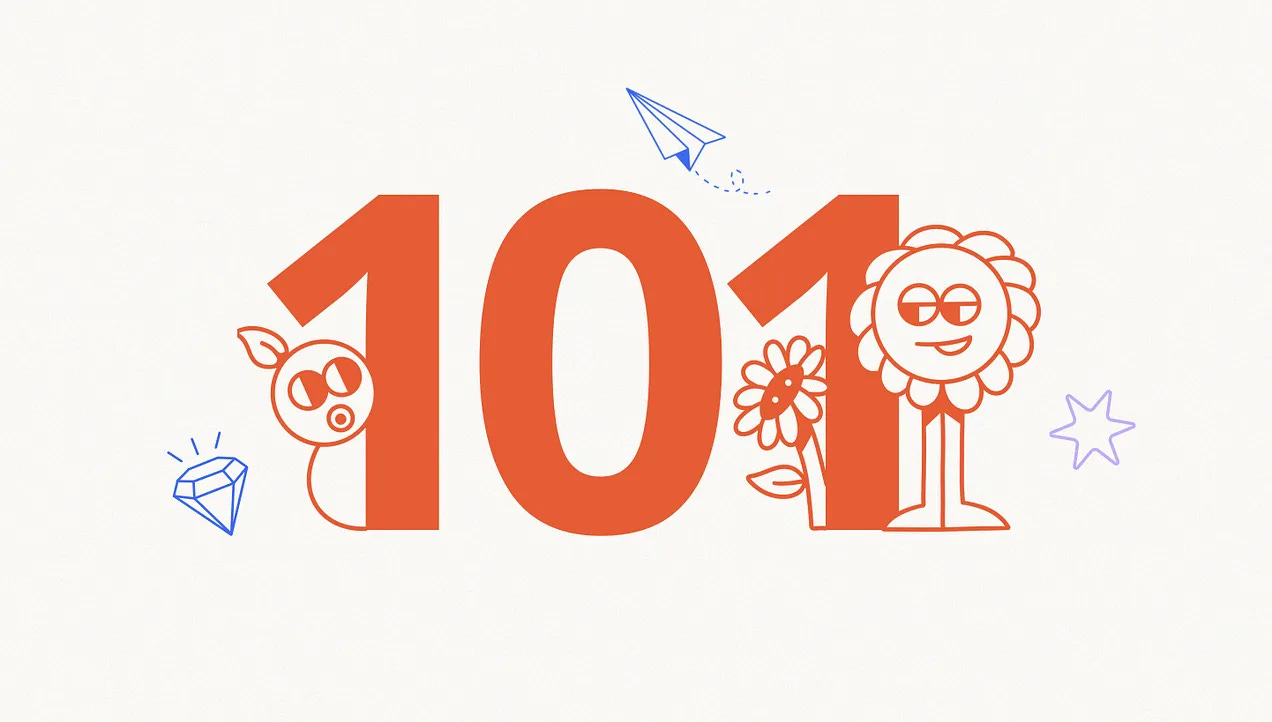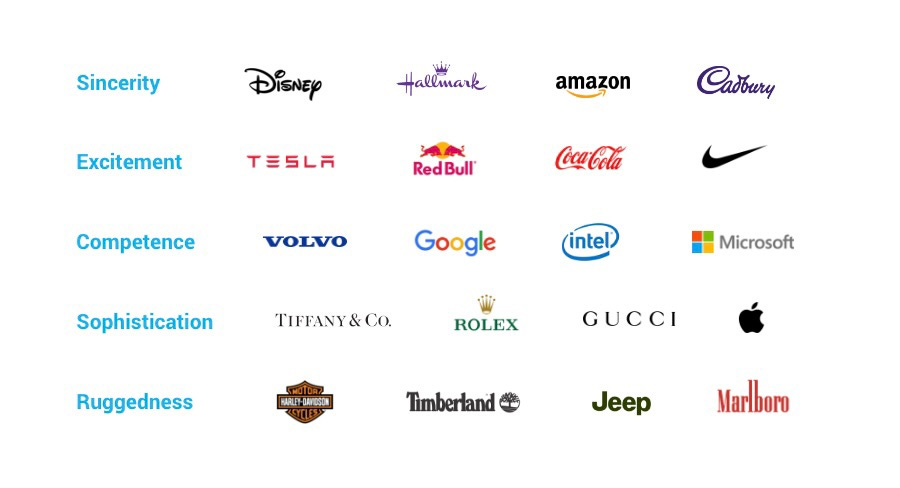How to find your voice and master your tone
Just as you’d recognise a friend's voice across a crowded room, your audience should be able to identify your brand through your use of language. In this document, we’re letting you into our process and uncovering the exercises we use to move from initial client conversations to a completed set of “Brand Tone & Voice Guidelines”.
The aim is simple, whether you're the founder of the business or the summer intern, you’ll have a document which guides your messaging, retains consistency and ensures authenticity across the board.
Creativity is the aim, teamwork is the game
The first thing you should know about creating your brand voice is this - don’t attempt it alone. Not only is it maddening to stare at a page full of words and wonder which fits your brand, but you’ll never have the brainpower to match a group working creatively together.
Where some of your team might work best testing ideas in a group dynamic, others may need their own space to find their creative peak. Having a mixture of individual tasks and group challenges is a great way to cater to all personality types. Keep in mind that your job isn’t to have all the right answers, but to provide the environment, questions and prompts which help your team create magic.
Step one: audit your voice
Look at the competition (1-2 hours)
To successfully carve your niche in the market, you need to know who is already out there and how they are communicating. We think it’s the best place to start, you certainly don’t want to spend hours crafting language that turns out to be very similar to others in your space. We do this by googling the industry and taking screenshots from the website of competitors and brands with interesting language.
As you work through these with your team, pick out the language you think works and the language you don’t like. Ask yourself: what is it about the way “Brand X” is communicating that we like? We recommend spending a good amount of time on this, looking in depth at five or ten different brands.
Look at yourself (1 hour)
Now you know what’s out there, turn your eyes back to your own messaging. Where do you sit in relation to your competition? Is there language you think works well? Ask yourself: does it reflect our core values, our proposition and speak to our audience in an authentic and engaging way?
Create a market landscape diagram (30 mins)
Most industries tend towards a few methods of communication. The below example showcases how several technology companies might vary in their messaging. Create a similar diagram and populate it with your competitors, where you currently sit amongst them and where you would like to be.
Look to the best (30 mins)
Before you look at writing some of your own copy, it’s a great idea to look at how the best do it. We’re not the only ones sharing our secrets – in recent years several successful enterprises have published brand voice guidelines. Here are some of our favourites.
Ask your team to write down what it is that makes their favourite brands speak to them. Is it a compelling call to action, an amazing founders' story, a sustainability-first practice or something else?
Step two: find your voice
Whether you're J.R.R. Tolkien or Joe Bloggs, a blank page can be really daunting. It’s why we start with a few exercises to get ink on the page and the creativity flowing. Here are five of our favourites…
Brand personality traits (20 mins)
These are human characteristics that you associate with your brand to help guide its voice. It’s a good idea to think of two or three of these traits to work from. You want to pick traits that feel obvious and right to your brand, but keep you in your own lane. The market isn’t kind to copycats.
Brand likeness (20 mins)
If you’re a little lost on traits it can help to liken your brand to someone you know. Would you say you’re more Micheal Schumacher or Michael McIntyre? It might sound silly, but having someone in the back of your mind will bring you back to the tone you're looking to strike.
Brand archetypes (20 mins)
Swiss psychiatrist and psychoanalyst Carl Jung gave us twelve character archetypes. It’s another way to reflect on how you see your brand. Ask which feels most aligned with your purpose. Maybe you’re ‘The Rebel’, ‘The Hero’ or ‘The Magician’…
This not that (30 mins)
This one’s all about the specifics — about getting into the details of what your brand's personality is. The aim isn’t to pick opposites or things that are obviously undesirable, but things you might get confused between. It takes the form of “we’re X but not Y” and is best described with some examples…
We’re fierce but not feisty.
We’re formal but not serious.
We’re rebellious but not extreme.
Language sliders
A little like No.4, language sliders look to get specific. You want to pick two categories and place yourself somewhere between them. Do you sway more towards formal or causal language? Are you more Avante-Garde or traditional?
Step three: write your voice
So we’ve worked to identify where we sit in the market and where we’re aiming. Now we can begin to shape our brand guidelines document and provide the reader with a one-stop-shop for your brand tone and voice.
Tone of voice pillars
Here you’re after three or four words which both describe the tone you’re looking to strike and hold the values your brand instils.
Perhaps it’s: Knowledgeable | Caring | Trustworthy.
Or maybe it’s: Rebellious | Confident | Positive.
When you’ve settled on three or four words, write a paragraph exploring what each means for your tone. The idea is to explain why the pillar works towards your overall brand strategy and the language nuances you might come across when using it. Three sentences on each should do the trick.
Here’s what we might write for Rebellious.
“We’re bold in our pursuits, going against the grain to teach and preach all things diversity in a sector that’s due a glow-up. It’s not outright anarchy, but we know what we want, and we’re not here to be pushed around. It’s fearless and feisty but never aggressive and should always come with a pinch of humour.”
Style guide
You can see the style guide like a language FAQ. It serves to make sure that your employees have no 50/50 scenarios when writing that could lead your messaging estray. We feel it’s important to consider the following.
Point of view — do you talk to your audience in the first or third person?
Emojis — how “down with the kids” do you want to be?
Jargon — do you use specific terminology or more inclusive language?
Slang — how playful are you?
Abbreviations — do you refer to it as Instagram or ‘the gram’?
Preferred language — do you use “clients” or “customers”?
Avoided language — swear words are an obvious example but it might be more nuanced.
Do’s & don'ts
Your job here is to give the reader a clear indication of style and tone in a number of different circumstances. These will obviously vary based on industry, customer base and business type but a few of the following are a good port of call. It’s a case of the more the merrier — we aim for five to ten.
Social media captions.
Press release.
Email response to a customer.
Email approach to a new client.
Website copy.
Email newsletter.
Product description.
Service description.
If you were a recruitment agency looking to congratulate someone on a new job it might go something like this…
Do: “Is that the pop of champagne we hear? 💃”
Don’t: “Congratulations on your new job!”
Step four: use your voice
Don’t worry you’ve done the hardest part — we’re nearly there. Stage four is where you see the hard work turn into magic. Here are some tips to ensure your tone sticks.
Start with it
You can’t expect a new hire to nail your voice out of the gate so lean on your guidelines. Make them part of your training and get new hires to write some practice copy.
Print it
We live in a world of 0’s and 1’s, yet there’s still something to be said for a “hard copy”. So print it and stick it up around the office. A trip to the copier isn’t a glamorous way to spend an hour, but whether it’s a sales assistant or the CEO, a printed guide can only have positive outcomes.
Practice it
It’s important to remember where we started — your values and purpose. These began to formulate the way you speak on the page, now it’s time to talk that way and embed it into your culture. Nothing beats practice and internal communications are a great place to start. Whether it’s a chat over coffee or email, ask your team to keep your guidelines in mind.
Go back to it
Nothing is concrete, the world might change, your customers might change and you might change. It’s important to revisit your guidelines and adapt to the shifts around you. We advise going back to them before any major marketing decision or at the very least setting a date a year down the line to check your tone.
Want more guidance?
We’re always here if you need help striking the right tone, shall we put the kettle on?







